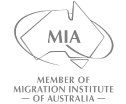Australia’s student visa pathway has undergone fundamental restructuring with the introduction of the Genuine Student (GS) requirement, replacing the previous Genuine Temporary Entrant (GTE) framework. This evolution directly impacts skilled professionals considering Australian education as a stepping stone toward permanent migration. Effective March 2024, the GS requirement shifts the assessment focus from temporary intent to academic legitimacy, requiring applicants to demonstrate genuine study motives through structured evidence-based submissions rather than narrative declarations[1][3][5].
Structural Framework of the Genuine Student Requirement
Core Assessment Objectives
The GS requirement evaluates applicants through targeted criteria designed to filter non-genuine applicants while creating clearer pathways for career-focused students:
- Academic justification: Rigorous alignment between chosen programs and professional backgrounds or advancement goals
- Financial capability: Demonstrated capacity to cover tuition and living expenses without unlawful employment
- Home country linkages: Evidence of compelling reasons to return after studies (despite long-term migration aspirations)
- Immigration compliance: Transparent travel and visa history documentation[3][5]
This framework replaces the previous 300-word personal statement with a questionnaire format limiting responses to 150 words per question, demanding precise evidentiary support for each claim[3].
Critical Documentation Framework
Applicants must substantiate claims through:
| Document Category | Specific Requirements | Strategic Importance |
|---|---|---|
| Academic | Prior transcripts, course progression evidence, CoE | Demonstrates legitimate study progression |
| Financial | 12-month fund proof, income sources, sponsorship papers | Meets stricter evidence thresholds[1][4] |
| Employment | Position details, employer verification, leave documentation | Validates career advancement motives |
| Ties to Home | Property deeds, family dependents, employment contracts | Balances migration intent with return justification[3][5] |
Strategic Response Development for Skilled Applicants
Targeted Question Approach
The GS questionnaire centers on four investigative pillars requiring professionally tailored responses:
- Current circumstances: Detail professional achievements and financial stability while highlighting gaps addressed through Australian education
- Course selection rationale: Explicitly link course modules to specific skill deficiencies in your home country’s job market
- Future benefit analysis: Project quantified career advancement or salary increases post-qualification
- Migration context: Transparently address long-term migration goals while emphasizing academic priorities[3][5]
Overcoming High-Risk Profile Challenges
Professionals from fields with skills shortages face heightened scrutiny. Mitigation strategies include:
- Course selection alignment: Choosing CRICOS-registered programs in Priority Migration Skills Occupation List fields
- Gap analysis: Demonstrating how Australian qualifications resolve local market deficiencies
- Career staging: Presenting concrete post-study return plans (e.g., employment contracts with Australian subsidiaries)[5]
For previously refused applicants or those switching visa categories, include:
- Formal explanations of changed circumstances
- Updated skills assessments
- Evidence of program progression if returning after gap[3]
Evidence Optimization Techniques
Financial Documentation Protocol
The 2025 requirements mandate:
- 12-month coverage: Tuition + living costs (AUD$24,505/year minimum)
- Asset trail: Three-month bank statements showing accumulation history
- Income alignment: Pay slips matching declared funding sources[4]
Academic Evidence Curation
- Transcript authentication: Certified translations with grading key explanations
- Professional credit mapping: Cross-referencing prior learning against course modules
- Institutional justification: Letter detailing why Australian providers offer unavailable specializations[3]
Pathway Navigation for Migration-Focused Professionals
Expressing Migration Intent Strategically
The GS framework uniquely permits discussion of long-term Australian aspirations when balanced with:
- Clear study-purposing: Detailing how the program enables global career mobility
- Return timeline projection: Five-year home country career plans citing specific employers
- Contingency acknowledgments: Alternative migration pathways (e.g., skilled visas) if study doesn’t lead to sponsorship[1][5]
Post-Study Transition Planning
Leverage the GS application to establish foundations for skilled migration:
- Course relevance: Select programs qualifying for Post-Study Work Rights (PSWR) in targeted occupations
- Networking evidence: Industry engagement plans during studies
- Skill transfer strategy: Documentation showing how acquired competencies solve home country challenges[3]
Application Timeline and Compliance
Critical 2025 Process Changes
- Staged document upload: Mandatory pre-questionnaire evidence submission
- Question-specific annotations: Directly linking documents to questionnaire items
- Post-lodge verification: 48-hour response windows for additional requests[1][3]
Strategic Submission Framework
- Document audit: 8-week pre-lodgement evidence collection
- Question mapping: Aligning each response to evidentiary anchors
- External review: Migration agent verification of GS consistency
- Compliance buffer: Allocating 72 hours for potential supplementary requests
This restructured approach demands meticulous preparation but offers skilled professionals a transparent framework to align academic pursuits with long-term migration objectives. By treating the GS requirement as an evidentiary portfolio rather than an immigration hurdle, candidates transform their application into a compelling career investment proposition[3][5].










